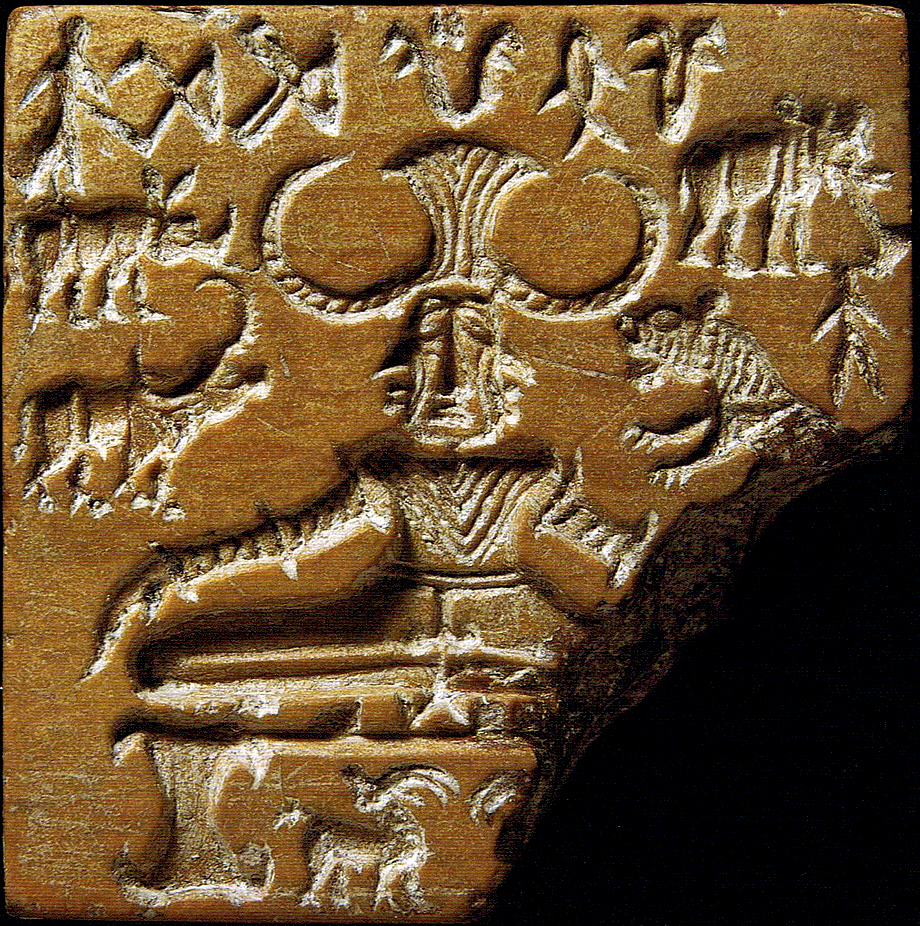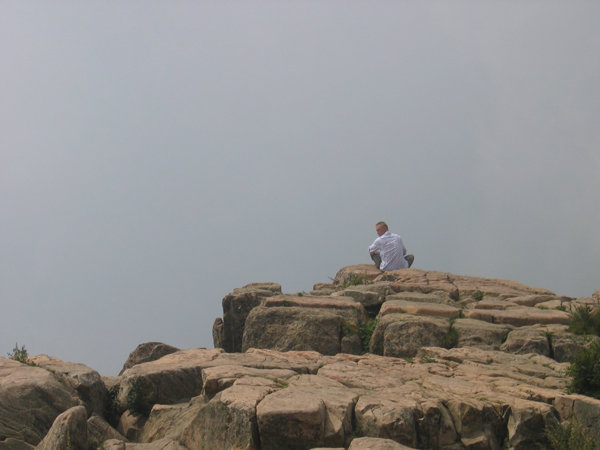Power of the Mind Series Part 2 … Read Part 1
PART 2: Mnemonics | The Memory Palace | Artistic Creativity | Enlightenment | The Universal Person | Archetypes | Inner Alchemy | Spirituality | Meditation, Mental Health and Enlightenment | Mindfulness Meditation | Studying and Professional Skill Building
PART 3: The Nervous System and Immunity | Neuroendocrinology | Psychoneuroendocrinoimmunology | Stress, Adrenaline and Homeostasis | How Visualization Works
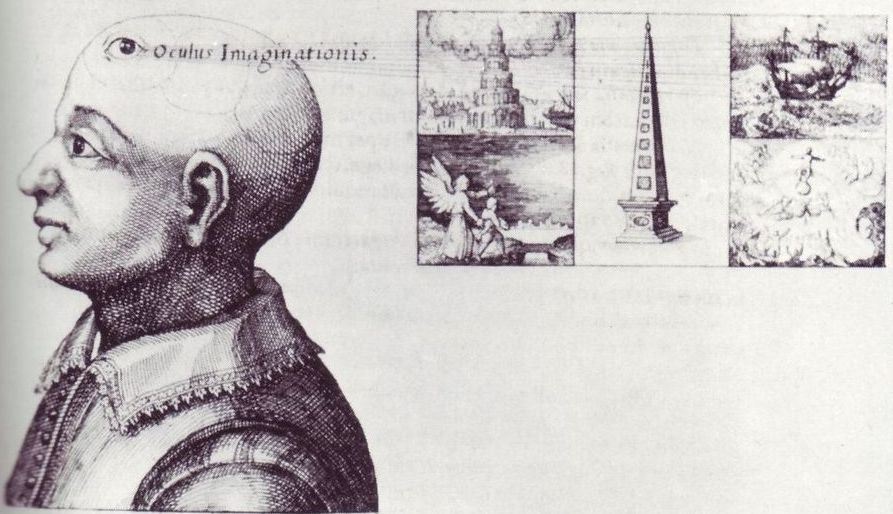
Mnemonics
It is truly strange and unfortunate that mnemonics, the study of strengthening and aiding memory, is not taught within the K-12 educational system. Considering that the work in elementary school, high school and college is primarily the memorization of facts, how is it that students are deprived of learning how to memorize facts. The techniques below should be the subject of a class for students in every grade.
The ancient Greek and Roman mnemonic device known as the method of loci or Memory Palace is one of the most respected and used techniques of memorization and recall even in the present day. “Loci” is Latin, meaning “places,” which refers to the strategy of making associations between visualized locations and material to be learned.
Champions of the World Memory Championships have used this method for outstanding achievements. For example, Dominic O’Brien used them to win the championship eight times. Clemens Mayer memorized over 1000 random digits within a half hour, setting the record for the number half marathon. Gary Shang memorized pi to over 65,536 digits.[1]
The inventor of mnemonics, the art of memory, was the ancient Greek Simonides of Ceos (556 – 468 BCE). The legend is related by the quintessential classical Roman orator, lawyer and statesman Marcus Tullius Cicero (106 – 43 BCE) and the Roman rhetorician Quintilian, or Marcus Fabius Quintilianus (35 – 100 CE).
Simonides was a guest of Scopas in Thessaly, invited to a banquet to recite a lyric poem. Being summoned outside by two young men, Simonides stepped out of a banquet hall to meet them, and the building collapsed.
Scopas and his guests were all killed and maimed beyond recognition. In order for them to be buried separately, they had to be identified. Simonides recalled the seating arrangement around the banquet table, and was able to remember where each guest sat, thus he could identify the bodies. He realized that memory was best utilized by clearly visualizing an orderly arrangement of images associated with specific locations.[2]
This was the origin of architectural mnemonics, the first method of the art of memory in the historical record, which has been developed over the centuries into the Memory Palace technique.
Quintilian wrote of Metrodorus of Scepsis (c. 145 BCE – 70 BCE), who used the signs of the zodiac as a basis for 360 loci for memorization. The earliest mention of memorization for rhetoric, or memoria, and the method of loci, is found in the anonymous Rhetorica ad Herennium, “Rhetoric: For Herennius,” from the early first century BCE. Believed to have been written by Cicero, it remained a staple of rhetoric along with other works by Cicero through the Middle Ages and the Renaissance.
Early Christian monks studying the liberal arts used the art of memory to memorize the Bible. Memorization assisted the Benedictine meditation known as Lectio Divina, or “Divine Reading,” from the sixth century, as well as preaching.
Giordano Bruno (1548 – 1600), an Italian Dominican friar burned at the stake for heresy by the Spanish Inquisition, wrote Ars Memoriae, or The Art of Memory, in 1582. His method borrowed from the architectural method of loci, the internal alchemy of Hermeticism, the Jewish mystical system called Kabbalah, the medieval magic of Ars Notoria (the art of signs),[3] and diagrams of the philosopher Ramon Llull.[4] [5]
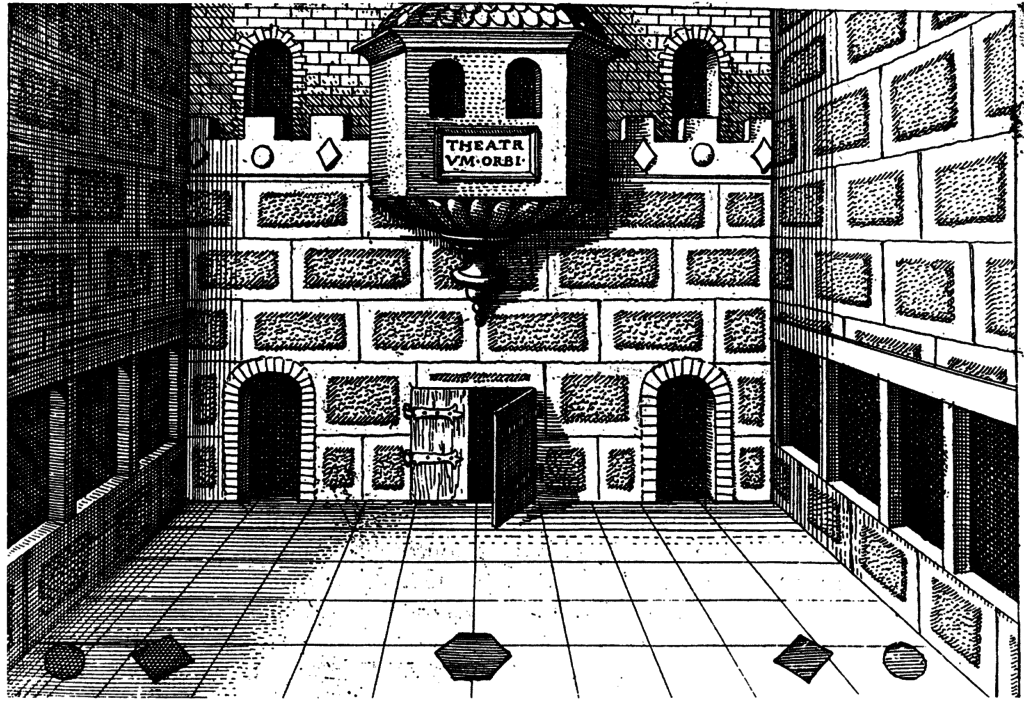
Robert Fludd (1574 – 1637) published his Ars Memoriæ in 1619. Fludd asserted that it was necessary to visualize actual buildings in architectural mnemonics, rather than imaginary structures, because images of the building had to be concrete to be effective. He was right in the sense that the more vivid an image, the greater its effect in visualization.
Fludd designed his mnemonic system with the zodiac as spiritual macrocosm and the Elizabethan theatre, (according to Frances Yates, perhaps the Shakespearean Globe Theatre), as material microcosm, after the Hermetic philosophy “As above, so below.”[6]
In the coming centuries the art of memory was established as essential in the arts of Logic, Rhetoric and Dialectics (debate).[7] The German philosopher Gottfried Wilhelm (von) Leibniz (1646 – 1716) divided the complete scholarship of the arts and sciences into three sections: reasoning, or logic; inventing, or combinatorics (a branch of mathematics); and memory, or mnemonics. Leibniz’s primary technique in the art of memory was architectural mnemonics.[8]
Dame Frances A. Yates (1899 – 1991) is indisputably the preeminent expert on mnemonics. Her work, The Art of Memory (U. Chicago Press, 1966), is an enlightening and thorough history of the art, its main subject being the Memory Palace.
[1] “Method of loci,” Wikipedia, retrieved 25 Oct., 2018, https://en.wikipedia.org/wiki/Method_of_loci
[2] Josh Cohen, “Simonides of Ceos,” 24 Nov., 2010, https://blog.artofmemory.com/simonides-of-ceos-81.html
[3] M. R. Reese, “The Ars Notoria – An Ancient Magical Book to Perfect Memory and Master Academia,” 17 Feb., 2015,
https://www.ancient-origins.net/artifacts-ancient-writings/ars-notoria-ancient-magical-book-perfect-memory-020220
[4] D. B. Smith, “Medieval European Alchemy,” 2 April, 2018, https://www.royalartsociety.com/2018/04/02/medieval-european-alchemy/
[5] Charles Doria and Dick Higgins, Bruno, Giordano, On the Composition of Images, Signs and Ideas, Willis, Locker & Owens, 1991.
[6] Douwe Draaisma, Metaphors of Memory: a history of ideas about the mind, Cambridge University Press, 2001, pp. 40 – 44.
[7] “Art of Memory,” Wikipedia, accessed 25 Oct., 2018, https://en.wikipedia.org/wiki/Art_of_memory
[8] Philippe Codognet, “The Semiotics of the Web,” retrieved 25 Oct., 2018, http://pauillac.inria.fr/~codognet/web.html
The Memory Palace
The Memory Palace is a method of memorizing material by visualizing the subjects of the material interacting with locations and furniture as the meditator imagines walking through the palace.
To memorize a speech, the orator visualizes himself walking through the Memory Palace by a specific path, and associates parts of the speech with different places, or loci, in the palace. Each loci is a vivid and unique background with distinct furniture. This visualization should be practiced several times each day for best results.
One recalls the speech during a presentation by visualizing the walk through the palace by the same path, visiting one loci at a time, in order, putting the parts of the speech together one by one.
The more interesting and vivid the associations are, the more likely they are to be recalled later. Images should contain an element of humor or shock value. For example, if one is memorizing the organ systems of the human anatomy, imagine the exterior of the palace covered in flesh, this is the integumentary system. The front door has eyes, a nose, ears, hands and a mouth with a tongue, these are the sense organs, and the front door opens into the throne room, with a brain sitting on the throne. This is the nervous system.
To continue, the dining hall in the rear of the palace is the digestive system, which contains one long table with all of the organs and parts of the digestive system on it. The skeletal system might be a dungeon inhabited with a white skeleton playing the piano, and the other organ systems can be similarly represented with strange associations. Different associations work for different people.
Each visualization must be specifically designed to meet the unique needs of the individual. That being said, studies have shown that the Memory Palace technique can yield tremendous results for anybody who takes the time to do it.
Researchers have shown that memory is not simply an innate gift, but that it can be improved with taught techniques. Martin Dresler and Nils Müller, neuroscientists at Radboud University in the Netherlands, along with Boris Konrad, a postdoc, and others, found in 2017 that training the average person in the Memory Palace technique resulted in a more than doubling of memorization ability after 40 days of half-hour training periods.
Published in the journal Neuron, control group subjects could recall an average of 26 out of 72 words at the beginning of the study, and 62 out of 72 at the end of the study. World Memory Championship athletes scored about 71 out of 72 on average.[1] Brain scans showed that the training altered the control group’s neural connectivity to resemble that of the athletes.[2]
Visualization has been shown to improve the mind at the levels of health, emotion, cognitive and physical skills and memory. Visualization is also a large factor in artistic creativity and spirituality.
[1] Dresler, Shirer, Konrad, Müller, Wagner, Fernández, Czisch, Greicius, “Mnemonic Training Reshapes Brain Networks to Support Superior Memory,” Neuron, 8 March, 2017, https://www.ncbi.nlm.nih.gov/pubmed/28279356
[2] Hannah Devlin, “Ancient technique can dramatically improve memory, research suggests,” The Guardian, 8 March, 2017,
https://www.theguardian.com/science/2017/mar/08/ancient-technique-can-dramatically-improve-memory-research-suggests-memory-palace

Artistic Creativity
Creative visualization has a profound impact on artistic creativity, inspiring and informing painting, sculpture, music, literature, architecture and other forms of artistic expression. Human beings naturally attempt to reproduce in art, literature and theatre that which they perceive in nature and imagine in their imagination. The ability to see imagery in the mind’s eye was an evolutionary development in neural structure that proved to be a survival advantage.[1]
The visual arts, such as drawing, painting, sculpting and graphic design, may be enhanced by the cultivation of creative visualization techniques. A complete and vivid picture in the mind’s eye is helpful for planning creative projects and visualizing the finished artwork.
Visualization is important in mathematics and the sciences.[2] Art is often used as a visual aid to help visualize concepts in math and science.[3] Computer graphics are the most technological, logical and preferred method of producing art for mathematic and scientific purposes, just as they are for visualizing designs in industries like fashion and architecture. However, the ultimate purpose these visual aids is to assist in developing an understanding of the concept being illustrated or provide instruction for tasks with a substantial cognitive component.
Musicians visualize music in a variety of ways, like music notations, music theory diagrams, mathematical models, and other classification systems. Several types of imagery within the imagination are used to create and play music. Auditory imagery, the sound within the imagination, is foremost in musical practice. Feeling the emotions associated with the music is another form of imagery.
The physical movements that produce sound from an instrument are the subject of inner kinesthetic imagery, and have been shown with functional magnetic resonance imaging (fMRI) to stimulate the nervous system, that is, auditory and motor processing, in a way similar to that of live performance.[4] [5]
Some piano teachers consider mental imaging to be superior to rote repetition.[6] There are specific kinesthetic imagery techniques designed to help the student practice piano or other musical instruments.[7] Often, musical practice involves an integration of a number of types of mental imagery.[8]
Writers use visualization techniques to immerse themselves in their settings, meet their characters and create a plot.[9] [10] As in creative writing, actors performing in theatre use visualization to imagine their character’s life and daily routine, in order to better understand the character’s history and motivations.[11] This takes visualization from the two or three dimensions of most visual arts into the fourth dimension of time, the stage of action and the human condition.
Beyond the practical purposes of visualization for relaxation, health, healing, athletics, life goals, artistic creativity, studying and professional skill building, creative visualization is also a primary meditative technique in the realm of the spiritual.
Continue to “Enlightenment” section after Notes…
[1] Gillian M Morriss-Kay, “The evolution of human artistic creativity,” Journal of Anatomy, Feb., 2010, https://www.ncbi.nlm.nih.gov/pmc/articles/PMC2815939/
[2] Mario Valle, “Visualization and art,” 2 Dec., 2007, http://mariovalle.name/visualization/VizArt.html
[3] Maria Kozhevnikov, “Visualization Processes in Physics,” retrieved 25 Oct., 2018, http://www.nmr.mgh.harvard.edu/mkozhevnlab/?page_id=645
[4] Terry Clark, Aaron Williamon, Aleksandar Aksentijevic, Chapter entitled “Musical imagery and imagination: The function, measurement, and application of imagery skills for performance,” in David Hargreaves, Dorothy Miell, and Raymond MacDonald, Musical Imaginations: Multidisciplinary perspectives on creativity, performance and perception, Print publication date: 2011, Print ISBN-13: 9780199568086, Published to Oxford Scholarship Online, May 2012, http://www.oxfordscholarship.com/view/10.1093/acprof:oso/9780199568086.001.0001/acprof-9780199568086-chapter-022
[5] Meister, Krings, Foltys, Boroojerdi, Muller, Topper, and Thron, “Playing piano in the mind—an fMRI study on music imagery and performance in pianists,” Cognitive Brain Research Volume 19, Issue 3, May 2004, pp. 219 – 228, https://www.sciencedirect.com/science/article/pii/S0926641004000023
[6] Gerald Klickstein, “Mental Imaging,” 4 July, 2010, https://www.musiciansway.com/blog/2010/07/mental-imaging/
[7] Lee Humphries, “Piano Technique and Kinesthetic Imagery,” 2005, http://www.thinkingapplied.com/kinesthesia_folder/kinesthesia.htm#.W6X9kRMzbMI
[8] Martin Lotz, “Kinesthetic imagery of musical performance,” Frontiers in Human Neuroscience, 13 June, 2013,
https://www.ncbi.nlm.nih.gov/pmc/articles/PMC3680781/
[9] Angela Ackerman, “5 Visualization Techniques to Help Your Writing Craft,” 17 Nov., 2016,
https://writershelpingwriters.net/2016/11/5-visualization-techniques-help-writing-craft/
[10] K. L. Romo, “Visualization and immersion: How authors make fiction come alive,” The Writer, 1 Feb., 2018,
https://www.writermag.com/2018/02/01/visualization-and-immersion/
[11] “Relaxation and Visualization,” BYU Dept. of Theatre and Media Arts, 2015, http://tedb.byu.edu/?page_id=1326
Enlightenment
Visualization is a common element in religious and spiritual traditions for various purposes. These range from guiding the soul in the afterlife in the ancient Egyptian Book of the Dead and the Tibetan Buddhist Book of the Dead, to the visions of the Native American vision quest, to the perception of subtle spiritual energies in modern day New Age aura reading and Reiki. Visualization is part of the meditations of many religions devoted to spiritual awakening or illumination.
Eastern systems of enlightenment that center on creative visualization include Hindu and Buddhist tantric yoga and Daoist inner alchemy. Creative visualization also plays a central role in Western esotericism, such as Kabbalah, Hermeticism, Neoplatonism, symbolic alchemy and astral travel as practiced by John Dee and Aleister Crowley. Christian meditations may incorporate creative visualization, for example, the Fourteen Stations of the Cross.
On consideration, the popular attraction of a lot of spiritual woo may be due to its value as guided meditation. Astrology is a visualization of the planets of the solar system and the stars in the sky. Ley lines are a visualization of the earth and what are considered sacred sites. Tantric yoga and Daoist inner alchemy are visualizations of the whole human being.
Pseudoscientific modalities of alternative medicine that have been shown by clinical research to have no effect when compared with a placebo, like Reiki or New Age treatments such as Deepak Chopra’s “quantum healing,” are creative visualizations of the human and the universe.
The Daoist is often also a symbolic alchemist, using visualizations of chemical processes, like the Western alchemist, to cultivate a meditative state. Symbolic alchemy is meditative cultivation that includes some combination of strict moral discipline, a regimented or healthy diet, and specialized exercises to nourish and purify the spirit, called quintessence or life-force. Symbolic alchemy often includes breath control, meditation, visualization, moderation of carnal practices, and physical exercises.
In the Ariyapariyesana Sutta, or The Noble Search, part of the Buddhist canon, the Tipitaka, the Buddha teaches the nine jhanas (dhyanas or meditations):
- Rapture & pleasure born from withdrawal, accompanied by directed thought & evaluation
- Rapture & pleasure born of composure, unification of awareness free from directed thought & evaluation — internal assurance
- ‘Equanimous & mindful, he has a pleasant abiding’
- Purity of equanimity & mindfulness, neither-pleasure-nor-pain
- Dimension of Infinite Space
- Dimension of Infinite Consciousness
- Dimension of Nothingness
- Dimension of neither perception nor non-perception
- Cessation of perception & feeling
These meditations are excellent examples of visualizations developed within a spiritual tradition for the purpose of realizing enlightenment. To this day there is no scientific research on these visualizations. The origin of these exercises is attributed to the founder of the religion, the spiritual leader known as “the enlightened one.” The Buddha is an example of the Universal Person, an archetypal representation of the idea of the perfect human being.
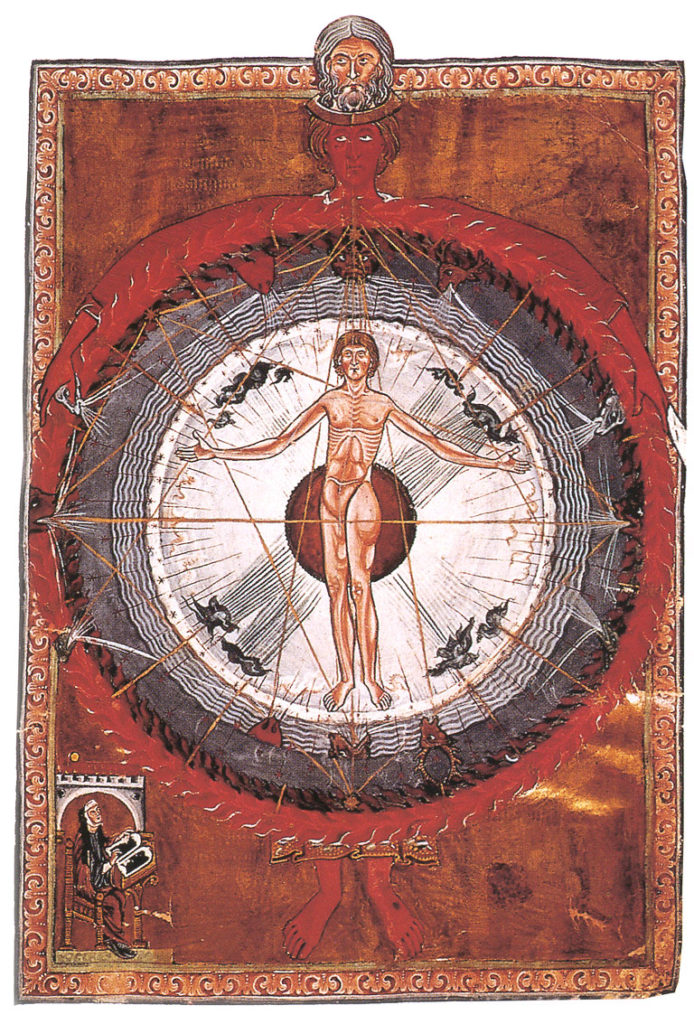
The Universal Person
In “The First Scientists: The Greek Philosophers of Ionia,” (2018) I wrote:
“The Classical Greek proto-scientific philosophers imagined an original substance of the universe. Some asserted that this substance was permanent and that change is illusory, while others speculated that change is constant and all-pervading. This primeval mass is what later alchemists would name ‘First Matter.’ This primary matter formed the basic elements of the cosmos, as described by Empedocles.
The four elements of Empedocles were heat, cold, wetness, and dryness; or Hot, Dry, Cold, Wet. Plato associated the four elements with the four most basic regular solids. Earth was the cube, air the octahedron, water the icosahedron, and fire the tetrahedron.
“Plato described the fifth Platonic solid, the dodecahedron, as “…arranging the constellations on the whole heaven.” Aristotle’s fifth element, “aether” in Latin or “ether” in English, made up the heavens. Aristotle saw the universe as matter and essence, so essence became the fifth element, or quintessence, in later alchemical theory. [This quintessence corresponds with conceptions of Adam, Jesus, the Logos, and other forms of the Primordial Man or Universal Person.]
“Neo-Platonism was the most mystical school of Greek philosophy. Alexandrian Neo-Platonists based their mystical philosophies mainly on the Hermetic texts and the writings of Plato. They perceived the universe as a unity containing four planes of existence. From the absolute One emanated the Divine Mind or Logos, the World-Soul, and the material world.
Sin was conceived of as man, on the lowest plane, turning away from the One. The philosopher could rise up through these planes through moral virtue and intellectual contemplation, coming at last to absorption in the One, the mystical union.”
The Neo-Platonic ideas concerning the mystical ascent would later have an influence on Renaissance theologians and philosophers directly, and through them, on the Freemasons and early modern scientists. Freemasons contemplate the geometric dimensional progression of the point, line, superficies (plane) and solid, (one might include motion or time) as the foundation of being.
This is the beginning of the study of the Liberal Arts and science, the second degree Fellow Craft’s training of the mind and its faculties, where the third degree Master Mason begins study of the spiritual, including a symbol of the Universal Person.
There are many ways to categorize the functions or faculties of the mind. When discussing creative imagery it is suitable to take notice of six general mental processes.
- Perceptual experience (observation with awareness and the senses)
- Emotions
- Intellectual knowledge (history, math, science, logic and critical thinking)
- Short-term and long-term memory (memory images)
- Imagination (visual concepts)
- Consciousness (awareness)
Visualizations are ideally used for withdrawing the senses from the world, after sensory observation, and creating an informed framework to organize one’s knowledge of the cosmos. This is the realm of cosmology, mathematics and philosophy. Human beings must view the cosmos only as it stands in relation to the human being, itself, that is, from a standpoint of subjectivity and self-awareness.
The Universal Person, such as Leonardo da Vinci’s Vitruvian Man, is the microcosm to the macrocosm of the universe. It derives from the belief that the proportions and functions of the human being are analogous with those of the cosmos. Visualizations of the Universal Person, such as the anatomical/functional organs and meridians of Chinese Traditional Medicine, Rama, the Buddha, the yogic seven chakras, the Christian Jesus Christ and the Zodiac Man, are widespread.
Meditations involving visualizations of the initiate’s human anatomy at the center of the physical universe are evolving in the West and becoming more mainstream in the fields of health and spirituality. The political utility of such a view lies in the universality of the image as a starting point for universal human rights. In psychology, the Universal Person may be recognized as a major archetype, an important part of the human subconscious mind, which can be invoked with visualization.
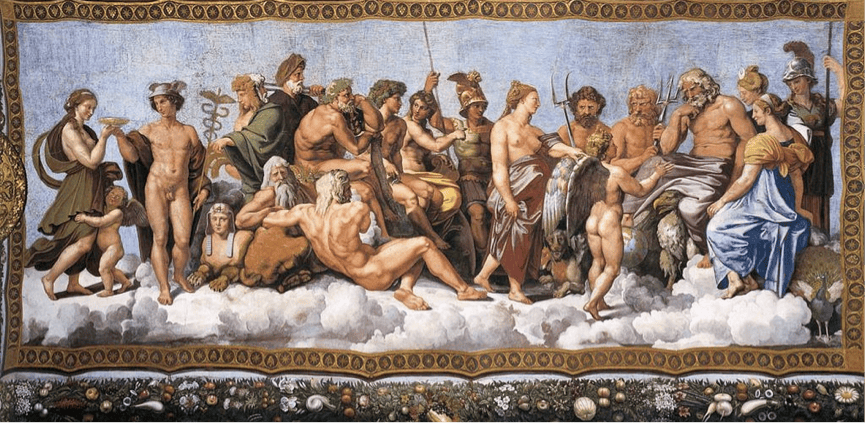
Archetypes
Carl Gustav Jung (1875 – 1961) was a Swiss student of the founder of modern psychoanalysis, Sigmund Freud. He developed his own system of psychotherapy that rivaled Freud’s from its inception. Karl Gustav, his grandfather and “inspiration” after whom he was named, was an ardent Freemason and was Grandmaster of the Grand Lodge in Switzerland.
Jung was a student of Kabbalah, Daoist and Western alchemy, Western and Eastern philosophy, and theology. His first studies assign mental disorder to certain experiences of occult phenomena. His research on schizophrenia led him to the theory of the collective unconscious, which proposed that a part of the human mind contained common mythological elements called ‘archetypes.’ Archetypes are expressed in myths, dreams, visions, and hallucinations.
Jung laid a great deal of stress on the exploration of archetypes, symbols in the collective unconsciousness that lie behind dreams and mythological constructs. Science describes reality, and in the science of psychology, symbols represent real things. No one worships the symbols or the things they represent, but rather, the symbols are used as a kind of vocabulary.
Jung conceived of twelve main archetypes, three sets of four cardinal orientations, which were meant to reflect major personality types. The three sets were the Ego, the Soul and the Self, divided between the four orientations of Ego, Freedom, Social and Order. The twelve archetypes were: the Innocent, the Regular Person, the Hero, the Caregiver, the Explorer, the Rebel, the Lover, the Creator, the Jester, the Sage, the Magician and the Ruler.[1]
Although there is no scientific evidence that archetypes reflect actual personality types, which is the basis behind the Myers-Briggs personality assessment, psychologists do agree on the Big Five personality traits.[2] The five-factor theory introduces extraversion, agreeableness, openness, conscientiousness, and neuroticism as the basic components of personality.[3] [4]
These empirically observed personality traits may serve as a context for the classification of Jungian archetypes, but archetypes are more than just aspects of personality, they also represent forces of nature and the dominant subjects of human experience.
Archetypes range from epic cosmic elements to human physical and mental processes, to certain pivotal rites of passage or other common human experiences. Alchemical symbols, like Jung’s archetypes, are the shared chemical stirrings of the human collective unconscious mind.
In fact, the seven planets and metals of alchemy describe the most basic archetypes, familiar as the embodiments of Melancholy (Saturn), Power and Law (Jupiter), Love (Venus), War (Mars), Calm Reflection (Luna), Creative Life-Force (Sol) and Divine Communion (Mercury).
Gods are often archetypes or, like Jesus, bundles of archetypes, as are many characters in stories around the world. As archetypes may be visualized in order to induce, examine and transform specific states of mind, so might a state of mind be reflected in or evoked by a verse, a piece of literature, a play or even a film. Such representations can be very influential.
Ritual is another type of aid to visualization that can be used to alter consciousness, as well, as is done in religious and fraternal ceremony. Ritual using archetypes is also used in Chinese alchemical meditations and may be utilized in contemporary therapeutic visualizations.
[1] Carl Golden, “The 12 Common Archetypes,” retrieved 25 Oct., 2018, http://www.soulcraft.co/essays/the_12_common_archetypes.html
[2] David M. Condon, “The SAPA Project,” 16 Jan., 2018, https://sapa-project.org/
[3] Ben Guarino, “Scientists Identify Four Personality Types,” Washington Post, 17 Sept, 2017, https://www.washingtonpost.com/science/2018/09/17/scientists-identify-four-personality-types/?utm_term=.98efad4ecdef
[4] “Five-Factor Model of Personality,” Psychologist World, accessed 25 Oct., 2018, https://www.psychologistworld.com/personality/five-factor-model-big-five-personality
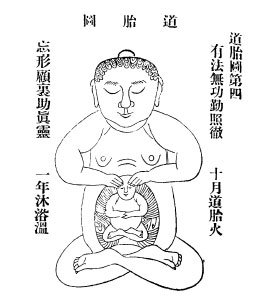
Inner Alchemy
“In both Chinese Daoist alchemy and the Western Royal Art, two distinct interpretations of alchemy have developed over time: ‘external alchemy’ (Mandarin waidan) and ‘internal alchemy’ (neidan). ‘External alchemy’ is the literal interpretation, producing and consuming herbal recipes, pills, powders and elixirs with the intention of cultivating life and longevity or achieving physical immortality.
By contrast, ‘internal alchemy,’ also called inner alchemy or symbolic alchemy, is a path of meditative cultivation that includes some combination of strict moral discipline, a regimented or healthy diet, and specialized exercises to nourish and purify spirit, called quintessence or life-force.
Symbolic alchemy often includes breath control, meditation, visualization, moderation of carnal practices, and physical exercises. It also, therefore, aims to nurture and prolong life, but only incidentally. Symbolic alchemy is also a form of therapy, as exemplified by C. G. Jung’s analytical psychology.”[1]
Traditional visualizations of a palace and throne are very useful, a good example of which is found in ancient Chinese Daoist alchemical text The Secret of the Golden Flower, made famous when C. J. Jung wrote his commentary to the 1931 English translation. The Secret of the Golden Flower was written during the Qing Dynasty (1644 – 1912) by either Lü Dongbin, or his student Wang Chongyang, the founder of the Quanzhen School of religious alchemical Daoism.
The Secret of the Golden Flower is a Chinese Daoist technical manual of meditation teaching the techniques of sitting silently, breathing and contemplation. It describes a golden castle, wherein rules the lord of the cosmos, the inner guide within every Homo sapiens.
The book was translated to German by Richard Wilhelm in 1929 with a commentary by Carl Jung, a personal friend of Wilhelm’s.[2] It was this book that piqued Jung’s interest in alchemy and inspired his psychoanalytical methods.
The quintessential ancient Chinese Daoist alchemist Ge Hong wrote the famous landmark fourth century alchemical work Baopuzi as an overview of the alchemy of his time. The Lord Lao alchemical meditation in the Baopuzi provides a focus to the visual structure of the artwork, as the immortal emperor of the cosmos, in the Chinese alchemist’s “temple made without hands.”
Chapter Three, “Circulation of the Light and Protection of the Center,” describes specific alchemical meditation techniques beginning with meditation confessed to be a Buddhist as well as a Daoist practice.
The alchemical guide directs the alchemist to sit comfortably in an upright posture, lower the eyelids and focus the eyes on the tip of the nose and the point between the eyes in order to prepare for the circulation of the light. Such practice is compared to the mason’s plumb-line as a steady guide for one’s work.
Once the attention is fixed between and behind the eyes, in a space referred to as the ‘middle castle,’ the light will stream in of itself, but attention does not need to be settled there. The “light” is also known as “spirit,” which refers to the primordial life-force generally imagined to reside in the air and the breath of all living beings.
The Chinese word is qi, the Indian yogic term is prana, the Hebrew is ruach, the Common Greek is πνεῦμα (pneuma), the Latin is spiritus, and the French is élan vital. In terms of meditation, spirit is mindfulness. This is the secret of the Golden Flower.
[1] D. B. Smith, “My Zen Part II: Alchemy, Qigong and Taijiquan,” 5 Aug., 2018, https://www.scienceabbey.com/2018/08/05/my-zen-part-iii-alchemy-qigong-and-taijiquan/
[2] Translated from Chinese by Richard Wilhelm; Translated from German by Cary F. Baynes, The Secret of the Golden Flower (T’ai I Chin Hua Tsung Chih), Published by Kegan Paul, Trench and Trubner, 1931; Routledge and Kegan Paul Ltd., 1965, http://www.spiritandflesh.com/Chinese_SecretoftheGoldenFlower_online.htm
Spirituality
For the purposes of this article, spirituality is defined as the immaterial realm that permeates or transcends the temporal world, which may relate to a higher power, supreme being, gods, spirits, souls or life-force. Spiritual experience ranges from personal religious beliefs, revelations and mystical insights, to the dogma and ritual of organized religion.
“The mind is the entity that comprises sensations, perceptions, emotions, consciousness, imagination, memories, and thoughts; it is the nervous system and the information that flows through it. Spirit is defined as that part of the human being that connects one to the greater whole. It is the life-force or quintessence of life; the combination of material elements and bodily organ systems that perpetuate life. It is often associated with pure consciousness, the self-awareness that knows, ‘I am.’
“Psychologists such as Kenneth I. Pargament and Jeremy McCarthy regard spirituality as “the search for the sacred,” the sacred in this sense meaning anything that is deeply meaningful in a subjective way. This makes spirit an emotion of fulfillment as well as a connection to the greater whole. Alchemy, the precursor of science, was centered on the operations to purify and cultivate spirit.
“In the Hebrew Torah, the words of Moses describe God’s creation of heaven and earth from void, ‘Darkness over the surface of the deep’ with the ruach, translated as ‘wind’, ‘spirit’, or ‘breath’ of God ‘Sweeping over the water.’
The Christian term for ruach is Holy Ghost or Holy Spirit, the English ‘spirit’ deriving from spiritus, the Latin for ‘breath.’ This is usually considered to be distinct from the human soul. ‘Soul,’ describes simply the functions of the mind, or the whole person itself, as distinct from the spirit, the conjectured active spark of life within all living things.
“Spirits are interpreted differently by different cultures, for example, as Daoist gods and spirits, Chinese internal organs or life functions, as the Egyptian and Greco-Roman gods, the Jinni or genies of Islam, the Catholic Patron Saints, or Goetic and Enochian spirits.
The ‘Shemhamphorash’ of the Goetia of The Lesser of Solomon the King is a list of seventy-two spirits with various powers. These spirits are, in part, forces in nature which may be perceived, and in part, ‘portions of the human brain,’ as the philosopher magus Aleister Crowley conjectured in The Initiated Interpretation of Ceremonial Magic (1904).
“A ‘spirit’ may mean a force in nature, equivalent to a god or more specific in character. In this sense a spirit is simply an archetype, such as the spirit of love, the spirit of the sun or the spirit of the laws. The religious concepts and terminology of ‘divine’ or ‘spiritual,’ referring to the gods or forces of nature which rule over the temporal things, may be dismissed, unless aligned with natural law, as a reference to ideal things as a purely psychological set of phenomena.
“Evidence does not suggest the existence of life-force as a tangible thing. The concept of life-force may be nothing more than a mental construct to account for various essential elements of a healthy and enlightened life or state of mind. Defined as such it is useful in visualization leading to meditation.”[1]
[1] D. B. Smith, “Ancient Conceptions of Spirit and Deity,” 5 Sept., 2018, https://www.royalartsociety.com/2017/09/05/ancient-conceptions-of-spirit-and-deity/
Meditation, Mental Health
and Enlightenment
The highest goal of Buddhist meditation is Samadhi. This is a common term used in the various Hindu, Jain, Sikh, yogic and Buddhist schools. For thousands of years, meditation has been known as a three-fold process: Dharana, or concentration; Dhyana, meditation; and Samadhi, enlightenment.
The Sanskrit root Sam means ‘together’ or ‘united,’ and dhi is ‘consciousness.’ Samadhi, then, is when the mind pulls itself together to become whole. Samadhi is the consummation of concentration, when the mind is still. It is the state of awareness in the present moment. Samadhi is translated as enlightenment or illumination.[1] The Indian Sanskrit “Dhyana” became “Chan” in China and “Zen” in Japan, and it is this type of meditation that scientists have named “mindfulness meditation.”
Visualization is a natural preparation for mindfulness meditation. Studies on meditation and yoga include information from Positron Emission Tomography (PET), Magnetic Resonance Imaging (MRI) and Single Photon Emission Computerized Tomography (SPECT) and electromyography, which show the many benefits meditation bestows upon the brain.[2] [3]
Meditation increases frontal lobe activity such as attention, inhibition, judgment, planning, and voluntary movement, but meditation also may induce transient hypofrontality, a term that means the prefrontal cortex takes a rest and allows for a more holistic consciousness, like the runner’s high.[4]
B. Rael Cahn and John Polich published admirable tables in the Psychological Bulletin 2006 Vol. 132 No. 2, in “Meditation States and Traits, EEG, ERP and Neuroimaging Studies,” which showed the various results of available neuroimaging studies on meditation from 1957 to 2005.[5] Studies included Yoga meditation, Transcendental Meditation, Kundalini Yoga, Tibetan meditation, Qigong, Zen, mindfulness meditation, self-hypnosis, meditation on the Psalms, Franciscan prayer, and others.
A. B. Newberg and J. Iversen compared studies on neurochemical changes during yogic and Tibetan meditation in “The neural basis of the complex mental task of meditation: neurotransmitter and neurochemical considerations” in Medical Hypotheses (2003) 61(2), 282–291 published by Elsevier Science Ltd.[6] Along with changes in brain activity, their findings also revealed increases in chemical neurotransmitters and hormones with positive effects, such as dopamine (reward and motivation), serotonin (well-being and happiness) and melatonin (sleep).
Science has shown that meditation can induce feelings of comfort and bliss, and make one more aware of oneself and the environment, as well as benefit emotional well-being and mental health in general.[7] [8] [9] The ultimate meditation of the Chinese daoist and Zen Buddhist goes beyond effort, bliss and self-awareness, to a state of no-mind. No-mind, Chinese Wu Nien, is stillness of mind – not absence of mind like inanimate objects – but true self in pure form.
Jon Kabat-Zinn (born 1944) studied Buddhist meditation with Thich Nhat Hanh, Korean Seon (Zen) master Seungsahn, and others. He adapted these methods, along with Hatha yoga techniques, to a secular scientific worldview. The result gave rise to the popular term “mindfulness meditation.”
Continue to “Mindfulness Meditation” Section after Notes…
[1] Link Under Construction: D. B. Smith, “My Zen Part IV: The Buddha’s Meditation.”
[2] A. B. Newberg and J. Iversen, “The neural basis of the complex mental task of meditation: neurotransmitter and neurochemical considerations,” Medical Hypotheses, 61(2), 2003, pp. 282-91, https://www.ncbi.nlm.nih.gov/pubmed/12888320
[3] T. Krisanaprakornkit, W. Krisanaprakornkit, N. Piyavhatkul, M. Laopaiboon, “Meditation therapy for anxiety disorders,” The Cochrane Database of Systematic Reviews, 25 Jan., 2006, https://www.ncbi.nlm.nih.gov/pubmed/16437509
[4] Kate F. Hays Ph.D., “The Transient Hypofrontality Edge,” Psychology Today, 13 March, 2017,
https://www.psychologytoday.com/intl/blog/the-edge-peak-performance-psychology/201703/the-transient-hypofrontality-edge
[5] B. Rael Cahn and John Polich, “Meditation States and Traits: EEG, ERP and Neuroimaging Studies,” Psychological Bulletin, Vol. 132 No. 2, 2006, pp. 180-211. https://www.slideshare.net/antoniochavezss/meditation-states-and-traits-eeg-erp-and-neuroimaging-studies-cahn-polish-2006
[6] A. B. Newberg and J. Iversen, The neural basis of the complex mental task of meditation: neurotransmitter and neurochemical considerations,” Medical Hypotheses, 61(2), 2003, pp. 282-91, http://gufengtaichi.org/files/NeuralBasisOfMeditation.pdf
[7] Philippe R. Goldin and James J. Gross, “Effects of Mindfulness-Based Stress Reduction (MBSR) on Emotion Regulation in Social Anxiety Disorder,” Emotion, Feb; 10(1), 2010, pp. 83–91, https://www.ncbi.nlm.nih.gov/pmc/articles/PMC4203918/
[8] Shian-Ling Keng, Moria J. Smoski, and Clive J. Robinsa, “Effects of Mindfulness on Psychological Health: A Review of Empirical Studies,” Clinical Psychological Review, 31(6), Aug., 2011, pp. 1041–1056, https://www.ncbi.nlm.nih.gov/pmc/articles/PMC3679190/
[9] E. Mohandas, M.D., “Neurobiology of Spirituality,” Mens Sana Monographs, 6(1), Jan-Dec., 2008, pp. 63–80,
https://www.ncbi.nlm.nih.gov/pmc/articles/PMC3190564/
Mindfulness Meditation
Mindfulness meditation arose from traditional Buddhist practices and the branch of medical science called psychology, originally popularized through Jon Kabat-Zinn’s Mindfulness-Based Stress Reduction (MBSR) program at the University of Massachusetts Medical Center in 1979.
The science of mindfulness-based cognitive therapy is based on methods of cognitive behavioral therapy used in psychotherapy, and designed to aid sufferers of clinical depression. The method was described in Kabat-Zinn’s book, Full Catastrophe Living: Using the Wisdom of Your Body and Mind to Face Stress, Pain, and Illness (Delta, 1991). A short introduction by Jon Kabat-Zinn is online as “Mindfulness-Based Interventions in Context: Past, Present, and Future.”
Kabat-Zinn has taught meditation to people from all walks of life, from CEOs and Olympic athletes to government staff and ecclesiastics. Mindfulness programs have been adopted by such diverse bodies as educational organizations, Fortune 500 companies and the United States Armed Forces. The mindfulness meditation program has been adopted by medical facilities throughout the United States and around the world.
Whereas MBSR is utilized to treat chronic pain, anxiety and other disorders, Mindfulness-based Cognitive Therapy (MBCT) was developed as a cognitive behavioral therapy to treat depression.[1] [2] [3] Scientific research shows the positive benefits of these therapies and indicates promising conclusions in future studies.
Not enough clinical research has been carried out to date to offer a full understanding of mindfulness. Most scientific studies of meditation focus on its physical and psychological health benefits, ignoring its utility as a tool of observation or insight, and dismissing claims of enlightenment as the highest or ultimate psychological state of being.
Humanistic psychology has developed the theory of self-actualization as the realization of one’s full potential, popularized as the apex of Abraham Maslow’s hierarchy of needs pyramid, being the consummation of health.[4] Yet, although it is worthy of attention as a possible higher or ultimate state of consciousness, enlightenment does not appear in any such model.
Although some inquiry exists, the issue of enlightenment as heightened awareness or identification with the cosmos has not been robustly addressed by scientists.[5] Some researchers have difficulty even defining enlightenment, much less measuring it, while others point to correlations between objective neurophysiological measures and subjective experiences such as non-duality, bodily awareness, clarity and focus.[6]
More scientific research needs to be done on visualization, meditation and higher states of consciousness. Human beings are singular in that we are able to transcend our animal instincts like perception and emotion to explore concepts of reason, morality and awareness of a unified cosmos or higher self. It is evident that visualization methods can focus the mind and expand awareness for greater insight. Certainly the human race could benefit from more of that right now.
[1] “Mindfulness or Mindfulness-Based Cognitive Therapy?” Centre of Excellence, 6 June, 2018,
https://www.centreofexcellence.com/what-is-the-difference-between-mindfulness-and-mindfulness-based-cognitive-therapy-2/
[2] W. R. Marchand, “Mindfulness-based stress reduction, mindfulness-based cognitive therapy, and Zen meditation for depression, anxiety, pain, and psychological distress,” Journal of Psychiatric Practice, 18(4), 18 July, 2012, pp. 233-52, https://www.ncbi.nlm.nih.gov/pubmed/22805898
[3] Christine E. Parsons, PhD, Catherine Crane, PhD, Liam J. Parsons, MA, Lone Overby Fjorback, PhD, and Willem Kuyken, PhD, “Home practice in Mindfulness-Based Cognitive Therapy and Mindfulness-Based Stress Reduction: A systematic review and meta-analysis of participants’ mindfulness practice and its association with outcomes,” Behaviour Research and Therapy, 95, Aug., 2017, pp. 29–41, https://www.ncbi.nlm.nih.gov/pmc/articles/PMC5501725/
[4] Self-actualization, Wikipedia, accessed 25 Oct., 2018, https://en.wikipedia.org/wiki/Self-actualization
[5] Sam Harris, “Waking Up with Sam Harris #102 – Is Buddhism True? (with Robert Wright),” YouTube video, 2:13:22, 30 Oct., 2007, https://www.youtube.com/watch?v=i9SGs89x8lY
[6] Jake H. Davis and David R. Vago, “Can enlightenment be traced to specific neural correlates, cognition, or behavior? No, and (a qualified) Yes,” Frontiers in Psychology, 4, 2013, p. 870, https://www.ncbi.nlm.nih.gov/pmc/articles/PMC3837242/

Studying and Professional Skill Building
Creative visualization is highly recommended for studying and cognitive tasks. Memory and other cognitive functions are best served by maintaining a regular sleeping schedule with the right amount of sleep, a healthy diet and proper exercise. Visualization, or mental practice as it is called in this respect, is one method among the various techniques for studying (like flashcards) and for mastering new skills.
Visualization is necessary in most scientific and artistic professions. More or less accurate fourth-dimensional maps of reality can be created with scientific modeling, which covers mediums from mental imagery, to graphical models, to computer graphics.[1] [2] [3] [4]
Mindful physical practice is the most expedient method of developing skills and improving efficacy in performing tasks. Research has found that mental practice enhances performance in tasks involving high degrees of perception, cognition and fine motor control.[5] [6] [7] [8] Certain professions especially benefit from this kind of mental training, such as precision machining, carpentry, technical drawing and illustrating.
Public speaking is a vital component of education and industry. Creative visualization supports several aspects of this essential skill. According to studies, people are more afraid of public speaking than they are of death.[9] Rational visualization is a proven method to reduce fear during public speaking. Rational visualization involves imagining a presentation with all of the things that could go wrong. This prepares the mind to recover from mistakes.
The method of process visualization breaks an activity, in this case, public speaking, into steps. Each step is visualized one by one, from preparation, to rehearsal, to speaking before an audience, to coping with potential problems.[10] Visualization may also be a primary factor in memorizing and recalling a speech. Visualization techniques for memory are very useful, not just for presentations, but in many facets of life.
[1] “Scientific modelling,” Wikipedia, accessed 25 Oct., 2018, https://en.wikipedia.org/wiki/Scientific_modelling
[2] IkuruOtomo, MasahikoOnosato, FumikiTanaka, “Direct construction of a four-dimensional mesh model from a three-dimensional object with continuous rigid body movement,” Journal of Computational Design and Engineering Volume 1, Issue 2, April 2014, Pages 96-102,
https://www.sciencedirect.com/science/article/pii/S2288430014500152
[3] Peter Bauer, “Today’s weather forecast: Good with a strong chance of improvement,” Earth Magazine, 18 Oct., 2016, https://www.earthmagazine.org/article/todays-weather-forecast-good-strong-chance-improvement
[4] Max Teodorescu, “AI learns to predict human behavior after watching hundreds of hours of The Office and YouTube videos,” 20 July, 2016,
https://www.electronicproducts.com/Robotics/AI/AI_learns_to_predict_human_behavior_after_watching_hundreds_of_hours_of_The_Office_and_YouTube_videos.aspx
[5] D. L. Feltz and D. M. Landers, D. M., “The effects of mental practice on motor skill learning and performance: A meta-analysis,” Journal of Sport Psychology, 5, 1983, pp. 25-57.
[6] E. D. Ryan and J. Simons, “What is learned in mental practice of motor skills: A test of the cognitive-motor hypothesis,” Journal of Sport Psychology, 5, 1983, pp. 419-426.
[7] C. A. Wrisberg and M. R. Ragsdale, “Cognitive demand and practice level: Factors in the mental rehearsal of motor skills,” Journal of Human Movement Studies, 5, 1979, pp. 201-208.
[8] S. G. Zecker, “Mental practice and knowledge of results in the learning of a perceptual motor skill,” Journal of Sport Psychology, 4, 1982, pp. 52-63.
[9] Karen K. Dwyer and Marlina M. Davidson, “Is Public Speaking Really More Feared Than Death?” PDF, Communication Research Reports, 30 April, 2012, https://www.researchgate.net/publication/271993200_Is_Public_Speaking_Really_More_Feared_Than_Death
[10] Olivia Mitchell, “The truth about visualization for public speaking success,” retrieved 25 Oct., 2018,
https://speakingaboutpresenting.com/nervousness/visualization-public-speaking/
Read Part III of the Power of the Mind Series:
“The Mind-Body Synthesis”
(Page Under Construction)


